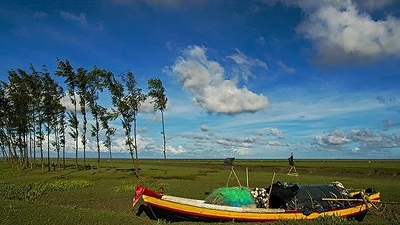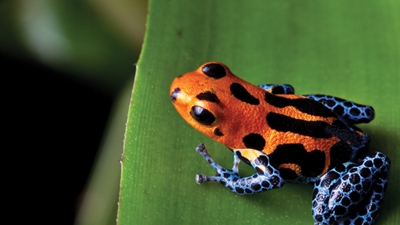Challenge
Despite the progress in reducing global poverty in the past 15 years, there has been less progress in managing the environment sustainably. Pollution, overexploitation of fish stocks, biodiversity loss, and overuse of water and land threaten countries’ development efforts. The world’s population has grown larger and more prosperous. The global population of 6 billion in 2002 had already grown to 7 billion by 2013, and is projected to reach over 9 billion by 2050.
Alongside population growth, there have been sizable gains in prosperity. More people have escaped poverty over the past 20 years than at any other time in human history. Global trade has more than tripled since 1992, while developing country gross domestic product (GDP) has doubled, allowing for a proportional increase in consumption. As a result, the agricultural foot print has intensified, leading to agrochemical pollution, soil exhaustion and deforestation. Food demand has also stimulated water withdrawals that have tripled over the last 50 years. Water withdrawals are expected to increase by 50 percent by 2025 in developing countries. Today more than half of the world lives in cities. Over 90 percent of all urban growth is occurring in developing countries and this has resulted in serious air and water pollution in many parts of the world. Carbon-intensive and often polluting industries have grown, contributing to climate change and natural resource depletion. The immediate and long-term consequences of climate change—from a warmer planet to more-acidic oceans—further threaten progress on poverty reduction and development. Current growth paths are clearly putting too much pressure on an already stretched environment.
Solution
As overwhelming as the environmental challenge is, there has been a lot of collective progress on moving toward improved environmental sustainability. As part of this global effort, the World Bank launched a new Environment Strategy in 2012 to promote a green, clean and resilient world for all. The green agenda focuses on nurturing more inclusive growth, while protecting biodiversity and ecosystems by:
• enhancing countries’ decision making through the Wealth Accounting and Valuation of Ecosystem Services global partnership that supports valuing countries’ natural capital assets and incorporating them into their systems of national accounts;
• finding ways to restore the world’s oceans to health and economic productivity through working with a broad coalition of governments, international agencies, nongovernmental organizations and private companies; and
• testing the market’s willingness to encourage protection of critical habitat areas while also providing carbon storage benefits through continuing innovative work on forests and land use linked to the Reducing Emissions from Deforestation and Forest Degradation program.
Under the clean agenda, the focus is on continued support to countries to find low pollution and low-emission development paths through:
• South-South exchanges on best practice for managing pollution;
• scaling up use of cleaner stoves to help reduce indoor air pollution;
• supporting countries on river cleanup and legacy pollution issues; and,
• improving energy efficiency, encouraging a shift to renewable energies, finding climate- smart agricultural solutions, and building cleaner, lower-carbon cities.
The resilience agenda aims at reducing vulnerability to climate risks through:
• supporting countries to find climate change adaptation solutions, such as better coastal zone management;
• minimizing the damage of natural disasters in terms of loss of life and structural damage;
• improving the resilience of small island states; and
• increasing the resilience of infrastructure and restoring protective coastal ecosystems such as mangroves.
Results
Some examples of results of projects achieved with International Bank for Reconstruction and Development (IBRD) andInternational Development Association (IDA) support include:
Greener and cleaner policies and institutions supported by policy loans. Average annual development policy lending (DPL) for environmental issues increased from US$438 million in FY04-08 to US$1.48 billion in FY09-13. For instance, the Peru environmental DPL program (2009-2013) supported the creation of the Ministry of Environment, the setting-up of the agency for national parks and its sustainable financial strategy, air quality monitoring networks, public disclosure of air quality information and the creation of the National Environmental Certification Service (SENACE) to evaluate detailed Environmental Impact Evaluations (EIAs) and act as a one window system for all environmental permits and licenses of investment projects. The DPL also supported a successful reform that established a quota system for managing overcapacity and inefficiency plaguing the anchoveta fishery, while supporting social protection for fishers.


